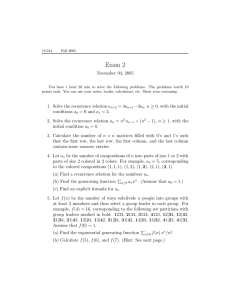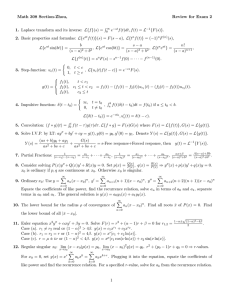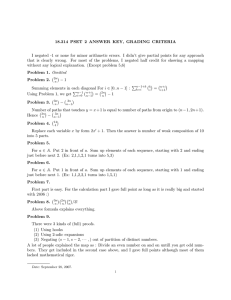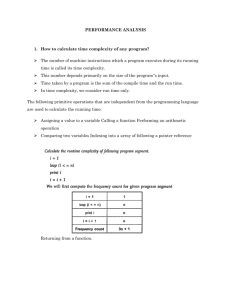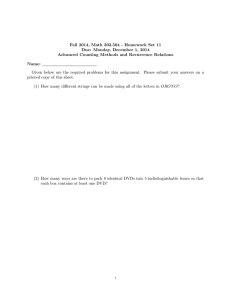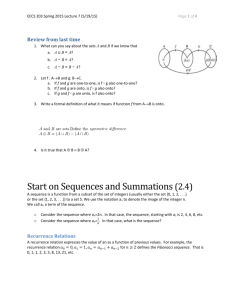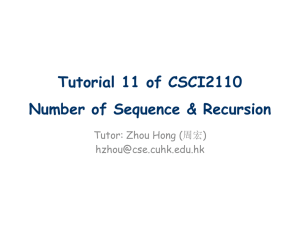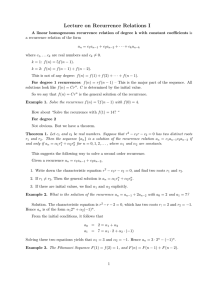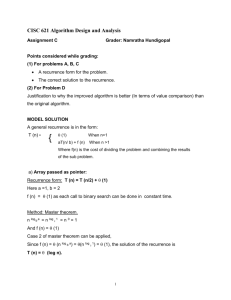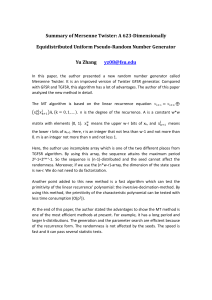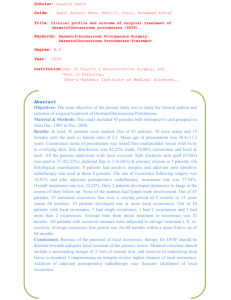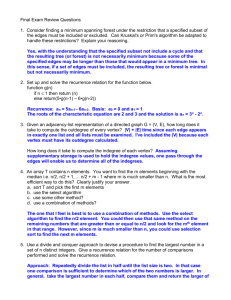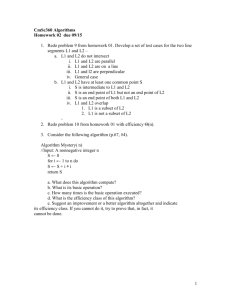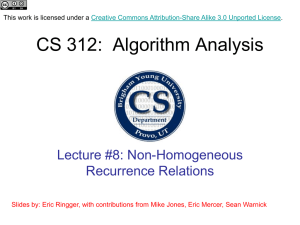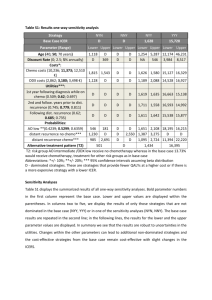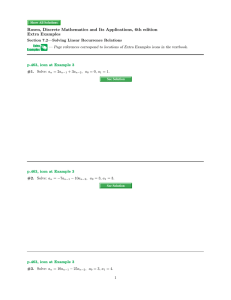Algorithms
advertisement
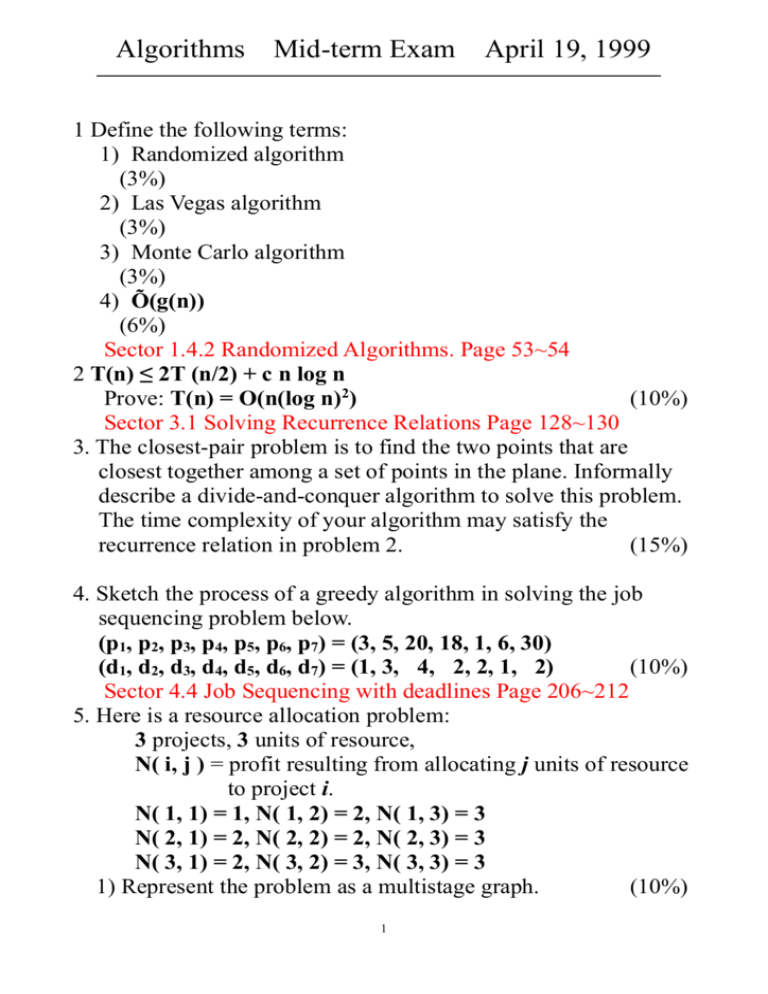
Algorithms Mid-term Exam April 19, 1999 1 Define the following terms: 1) Randomized algorithm (3%) 2) Las Vegas algorithm (3%) 3) Monte Carlo algorithm (3%) 4) Õ(g(n)) (6%) Sector 1.4.2 Randomized Algorithms. Page 53~54 2 T(n) ≤ 2T (n/2) + c n log n Prove: T(n) = O(n(log n)2) (10%) Sector 3.1 Solving Recurrence Relations Page 128~130 3. The closest-pair problem is to find the two points that are closest together among a set of points in the plane. Informally describe a divide-and-conquer algorithm to solve this problem. The time complexity of your algorithm may satisfy the recurrence relation in problem 2. (15%) 4. Sketch the process of a greedy algorithm in solving the job sequencing problem below. (p1, p2, p3, p4, p5, p6, p7) = (3, 5, 20, 18, 1, 6, 30) (d1, d2, d3, d4, d5, d6, d7) = (1, 3, 4, 2, 2, 1, 2) (10%) Sector 4.4 Job Sequencing with deadlines Page 206~212 5. Here is a resource allocation problem: 3 projects, 3 units of resource, N( i, j ) = profit resulting from allocating j units of resource to project i. N( 1, 1) = 1, N( 1, 2) = 2, N( 1, 3) = 3 N( 2, 1) = 2, N( 2, 2) = 2, N( 2, 3) = 3 N( 3, 1) = 2, N( 3, 2) = 3, N( 3, 3) = 3 1) Represent the problem as a multistage graph. (10%) 1 2) Write the recurrence relation for the multistage graph problem and solve the problem in part 1) step by step. (10%) Section 5.2 Multistage graphs. Page 257~261 2 6. Show how you use set approach dynamic programming to solve the following 0/1 knapsack problem step by step and give your answer to the problem. m = 20 (u1, u2, u3, u4) = (10, 15, 6, 9) (p1, p2, p3, p4) = ( 2, 5, 8, 1) (10%) Sector 5.7 0/1-Knapsack Page 287~294 7. Let A and B be matrices of dimension mxn and nxp respectively. The product C = AxB, an mxp matrix, can be computed using mnp multiplications. Let M1xM2x…xMr be a chain of matrix products, where Mi, 1≤ i ≤ r, has dimension D(i-1)xD(i) (i.e. D(i-1) rows and D(i) columns). Let Mij denote the product MixMi+1x …x Mj and C(i, j) be the cost of obtaining an optimal product sequence for Mij. Observe that C(i,i) = 0, 1 ≤ i ≤ r, and that C(i, i+1) = D(i-1) D(i) D(i+1), 1 ≤ i < r. 1) Give the recurrence relation for C( i, j ), i < j. (10%) 2) Sketch (or describe) how to solve the recurrence relation for C(1, r). Your algorithm should be of complexity O(r3).(10%) 3


